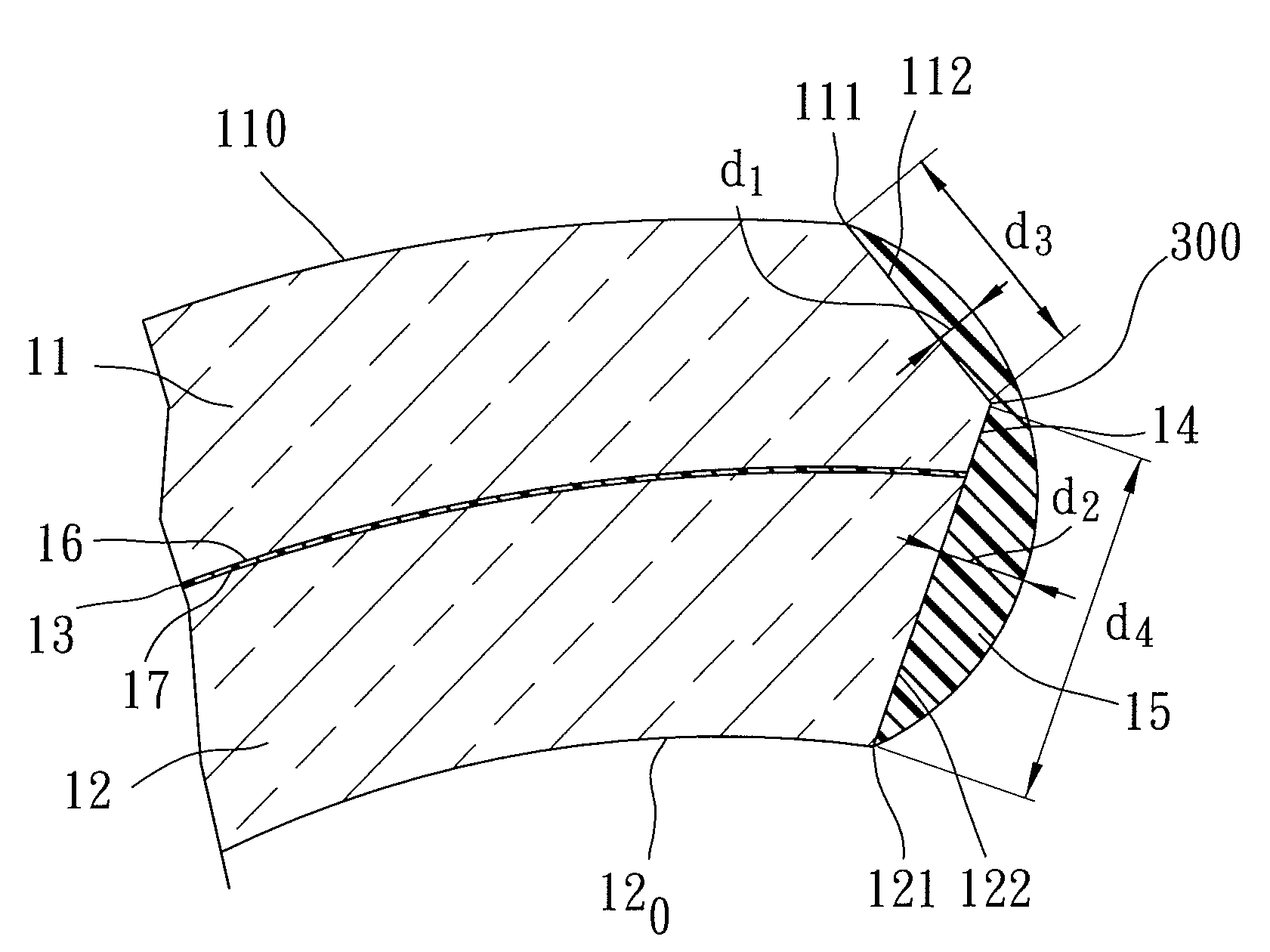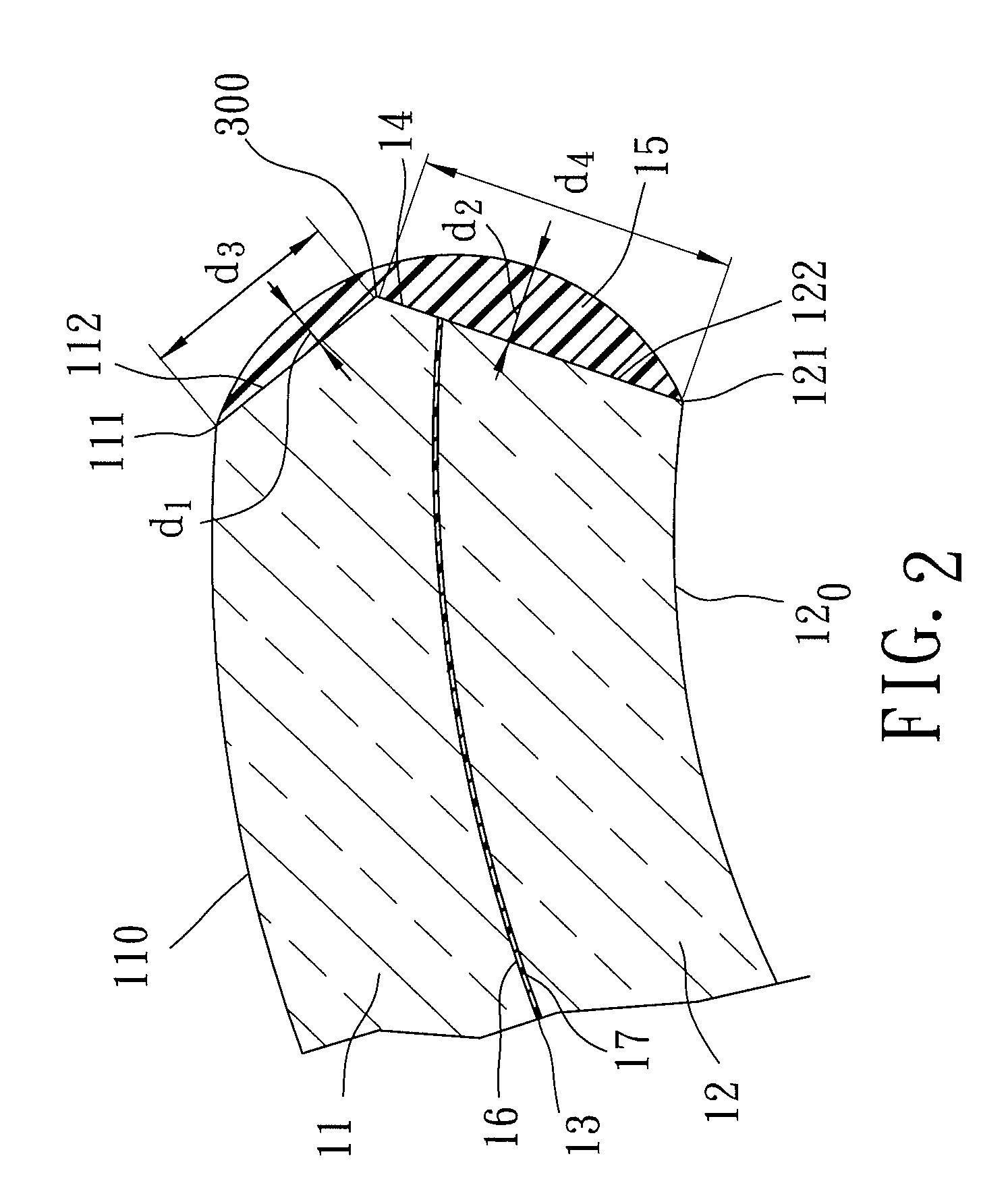Edge coated glass polarized lens
- Summary
- Abstract
- Description
- Claims
- Application Information
AI Technical Summary
Benefits of technology
Problems solved by technology
Method used
Image
Examples
example 1
[0048]Preparation of the Aliphatic Polyesterpolyol Based Urethane Methacrylate
[0049]222 g of IPDI was reacted with 130 g of hydroxyethyl methacrylate (the molar ratio was 1:1) to form an intermediate. 352 g of the intermediate thus formed was reacted with 500 g of a polycarbonate diol (marketed by Asahi Kasei Co. under the designation L4671) to obtain a polycarbonate diol based urethane methacrylate with a number average molecular weight of 1512.
[0050]Preparation of Coating Material
[0051]65 weight parts of the polycarbonate diol based urethane methacrylate thus formed was mixed with 25 weight parts of hydroxyethyl methacrylate, 7 weight parts of alpha-hydroxy ketone (marketed by Ciba Geigy under the designation Irgacure TM184), and 3 weight parts of methacrylate-functional silane (marketed by Dow Coring under the designation Z-6030) to for macoating material.
[0052]Preparation of the Glass Polarized Lens with the Edge Coating
[0053]Coating material prepared by the method mentioned abo...
example 2
[0057]Example 2 differs from Example 1 in that the coating material was prepared by using 15 weight parts of hydroxyethyl methacrylate and 10 weight parts of isobornyl methacrylate in stead of 25 weight parts of hydroxyethyl methacrylate in Example 1.
[0058]The thermal stability test results show that the relative change in luminous transmittance with each of the five test specimens was less than 3% after edge coating. The adhesion test results show that none of those 10 test specimens showed separation of edge coating 15 from their peripheral edge 14 after dismounting. The water resistance test results show that the average delaminating hours for those 20 test specimens with edge coating 15 was 157.6 hours, i.e., a 39% improvement in water resistance achieved with the edge coating of Example 2.
PUM
| Property | Measurement | Unit |
|---|---|---|
| Percent by mole | aaaaa | aaaaa |
| Weight | aaaaa | aaaaa |
| Molecular weight | aaaaa | aaaaa |
Abstract
Description
Claims
Application Information
 Login to View More
Login to View More - R&D
- Intellectual Property
- Life Sciences
- Materials
- Tech Scout
- Unparalleled Data Quality
- Higher Quality Content
- 60% Fewer Hallucinations
Browse by: Latest US Patents, China's latest patents, Technical Efficacy Thesaurus, Application Domain, Technology Topic, Popular Technical Reports.
© 2025 PatSnap. All rights reserved.Legal|Privacy policy|Modern Slavery Act Transparency Statement|Sitemap|About US| Contact US: help@patsnap.com



